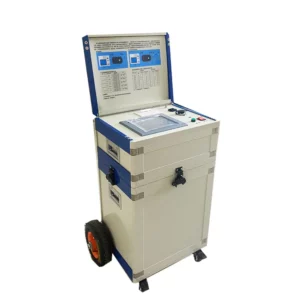The presence of air can affect high voltage tester results in several ways:
- Dielectric Strength: Air is an insulating material, but it can break down under high electric field strengths, leading to electrical discharge. When testing the dielectric strength of a material or insulation using a high voltage tester, the presence of air can create localized breakdowns or partial discharges, affecting the accuracy of the test results. These partial discharges may occur at lower voltages than expected due to air inclusions, giving a false impression of the insulation’s performance.
- Voltage Distribution: Air has a different dielectric constant than many materials being tested with a high voltage tester. This difference can affect the distribution of voltage across the sample or insulation being tested. high voltage tester Uneven voltage distribution may lead to misleading results or inaccuracies in determining the breakdown voltage of the material.
- Contaminants: Air may contain contaminants such as dust, moisture, or other particles that can interact with the high voltage test and affect the insulation properties being measured. Contaminants can create pathways for electrical discharge or introduce additional factors that interfere with the accuracy of the test results.
- Environmental Factors: The properties of air, such as temperature, humidity, and pressure, can vary depending on the testing environment. These environmental factors can influence the behavior of electrical insulation and affect the results obtained from high voltage testing. For example, high humidity levels can increase the likelihood of electrical breakdown in air and reduce the apparent dielectric strength of materials being tested.
To mitigate the effects of air on high voltage tester results, it’s essential to conduct tests in controlled environments whenever possible. Additionally, proper sample preparation, including the removal of air bubbles or pockets from the test specimen, can help minimize inaccuracies due to air inclusions. Calibration and validation of the high voltage tester equipment are also critical to ensure accurate and reliable test results, taking into account the potential influence of air and other environmental factors.
